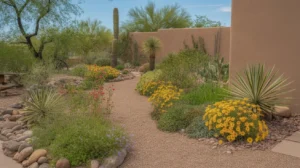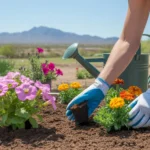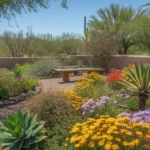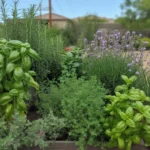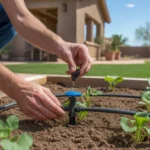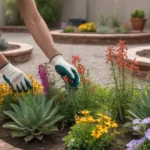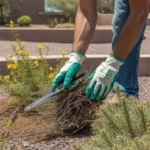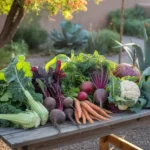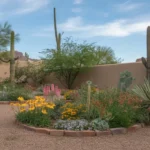Spring has sprung in the Southeast Valley, and it’s the perfect time to roll up your sleeves and get your hands dirty in the garden. Whether you’re a seasoned green thumb or a novice looking to cultivate your first crop, our guide to spring gardening in Chandler, Gilbert, Mesa, and Queen Creek will help you create a thriving oasis in the desert.
Choose Desert-Friendly Plants
When selecting plants for your Southeast Valley garden, it’s essential to choose varieties that can thrive in our arid climate. Look for native and desert-adapted plants that can handle the intense heat and minimal rainfall. Some excellent options include:
- Cacti and succulents like agave, aloe, and prickly pear
- Drought-tolerant perennials such as penstemon, desert marigold, and blackfoot daisy
- Hardy herbs like rosemary, thyme, and oregano
- Desert-friendly trees such as palo verde, mesquite, and desert willow
By opting for plants that are naturally suited to our environment, you’ll create a garden that requires less water and maintenance while still providing beauty and habitat for local wildlife.
Prepare Your Soil
The key to a successful garden starts with the soil. Southeast Valley soil tends to be heavy in clay and low in organic matter, which can make it challenging for plants to thrive. To give your garden the best chance at success, amend your soil with compost, aged manure, or other organic matter before planting.
Loosening the soil to a depth of at least 12 inches will help improve drainage and allow roots to establish more easily. If you have particularly heavy clay soil, consider raised beds or container gardening to provide better growing conditions for your plants.
Water Wisely
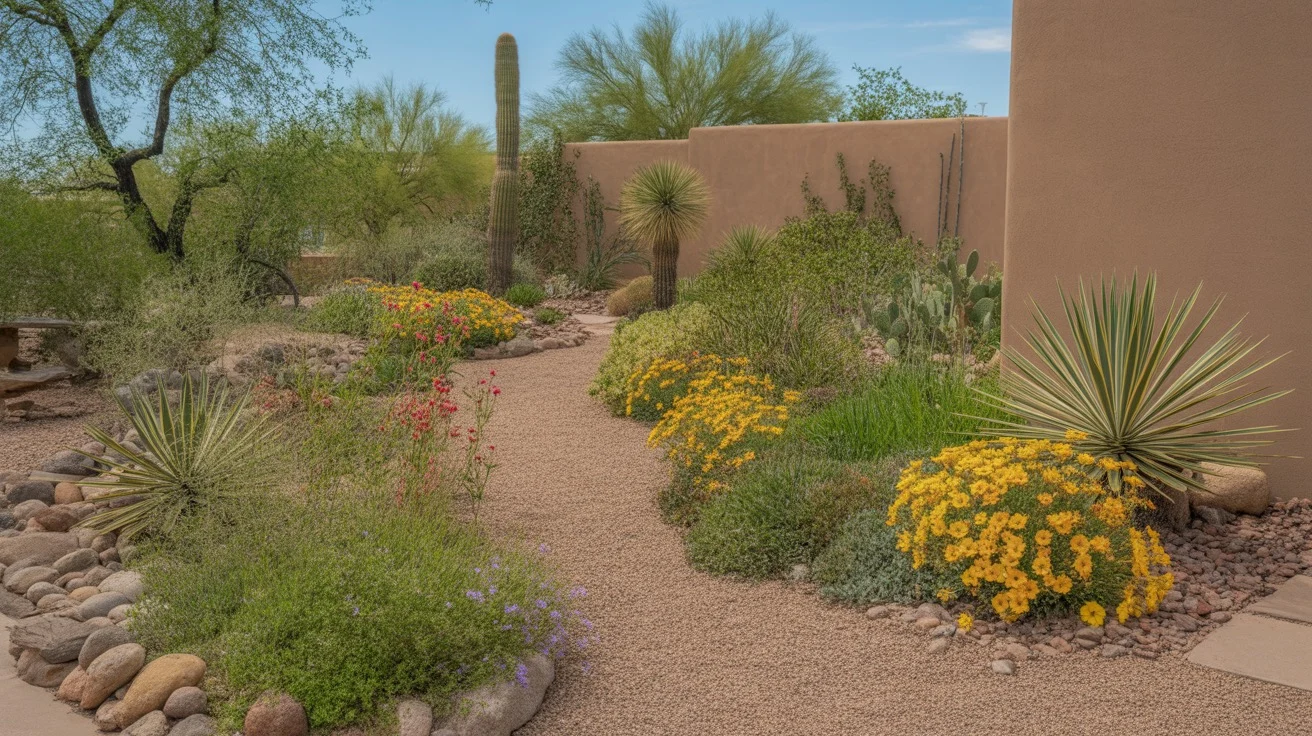
While the spring months bring milder temperatures to the Southeast Valley, it’s still important to be mindful of your water usage in the garden. Overwatering can be just as detrimental as underwatering, leading to root rot and other issues.
Water your plants deeply and infrequently, allowing the soil to dry out between watering sessions. This encourages deeper root growth and helps plants become more drought-resistant over time. Consider installing a drip irrigation system or using soaker hoses to deliver water directly to the roots, minimizing evaporation and waste.
Mulching your garden beds with a layer of organic material like straw, bark chips, or shredded leaves can also help retain moisture and regulate soil temperature, reducing the need for frequent watering.
Protect Against Pests and Diseases
Spring weather can bring an influx of pests and diseases to the garden. Keep an eye out for common culprits like aphids, whiteflies, and powdery mildew, and take action quickly if you spot any issues.
Encourage beneficial insects like ladybugs and lacewings, which feed on garden pests, by planting a diverse array of flowers and herbs. If an infestation does occur, try using natural remedies like insecticidal soap or neem oil before resorting to harsh chemicals.
Regularly inspecting your plants and removing any diseased foliage can help prevent the spread of common fungal diseases. Ensuring proper air circulation and avoiding overhead watering can also minimize the risk of disease.
Embrace the Seasons
One of the joys of gardening in the Southeast Valley is the opportunity to embrace the unique rhythms of our desert seasons. While spring is prime planting time for many crops, our mild winters allow for a second planting season in the fall.
As temperatures soar in the summer months, many desert plants go dormant, conserving energy until the cooler weather returns. Use this time to plan for your fall garden, experiment with heat-loving varieties, or simply enjoy the beauty of your spring plantings.
By working with the natural cycles of our environment and choosing plants that thrive in the desert, you can create a beautiful and bountiful garden that provides joy and nourishment throughout the year.

